Effective Treatment for Trichotillomania: Finding Relief and Healing in Arizona
You tell yourself, “I’ll stop tomorrow.”
But tomorrow comes, and the urge feels stronger than your willpower. You try to hide the thinning spots, the shame, the questions from others. You might even feel angry with yourself—Why can’t I just stop?
If you live with trichotillomania, this cycle can feel endless. It’s not about vanity or control—it’s about relief, anxiety, and patterns your brain learned to survive. But you don’t have to live this way forever. With the right help, recovery is absolutely possible.
At BrainBody OCD Counseling in Arizona, we specialize in helping individuals understand and manage the powerful urges behind compulsive behaviors like hair-pulling. Our approach combines OCD-focused therapy, evidence-based techniques, and nervous system regulation—because healing the habit means healing the whole self.
What Is Trichotillomania?
Trichotillomania (Hair-Pulling Disorder) is a type of Obsessive-Compulsive and Related Disorder (OCRD) where individuals feel an uncontrollable urge to pull out their hair. It’s more than a “bad habit”—it’s a coping mechanism your brain uses to manage stress, anxiety, or emotional overload.
People who struggle with trichotillomania often:
Feel rising tension or anxiety before pulling
Experience temporary relief afterward
Hide the behavior out of shame or fear of judgment
The truth is, you’re not alone—and there are effective ways to take back control.
Understanding the Why: Root Causes of Trichotillomania
Trichotillomania doesn’t come from a lack of willpower. It’s often influenced by a mix of:
Genetic and neurobiological factors linked to OCD and anxiety
Difficult emotions like stress, boredom, or shame
Perfectionism or trauma that makes relief-seeking behaviors feel “necessary”
That’s why OCD therapy and mental health counseling in Arizona take a holistic, compassionate approach. We help clients understand not just what they’re doing—but why—and how to meet those emotional needs in healthier ways.
Evidence-Based Treatments for Trichotillomania
1. Cognitive Behavioral Therapy (CBT)
CBT helps you identify the thoughts and emotional triggers that lead to hair-pulling. You’ll learn how to challenge unhelpful beliefs (“I can’t stop” or “I’m broken”) and replace them with self-compassion and coping strategies that actually work.
2. Habit Reversal Training (HRT)
The gold standard in trichotillomania treatment, HRT teaches awareness and new “competing” actions—like squeezing a stress ball, clenching your fists, or deep breathing—when the urge hits. Over time, your brain relearns how to self-soothe without pulling.
3. Exposure and Response Prevention (ERP)
At BrainBody OCD Counseling, we often integrate ERP, a leading form of OCD therapy. It helps you gradually face triggers while resisting the urge to engage in the behavior, reducing anxiety and rewiring your response over time.
4. Acceptance and Commitment Therapy (ACT)
ACT teaches mindfulness and emotional acceptance, helping you notice your urges without judgment. You’ll learn to align your actions with your values—choosing healing and peace over temporary relief.
5. Mind-Body Integration and Biofeedback
Because emotional regulation plays a key role in trichotillomania, we use biofeedback and nervous system regulation tools like HeartMath to help clients recognize body stress signals and respond with calm, not compulsion.
Why Choose OCD Therapy in Arizona
Healing from trichotillomania takes more than just stopping the behavior—it’s about understanding the story beneath the surface.
At BrainBody Wellness Counseling in Scottsdale, AZ, we specialize in treating OCD, anxiety, and related conditions through an integrative approach that addresses both the brain and body.
Our clinicians provide:
Specialized OCD and anxiety counseling
Trauma-informed care
Support for co-occurring depression, perfectionism, and shame
Telehealth therapy for individuals across Arizona
You’ll never be judged for your symptoms here. We meet you with curiosity, compassion, and proven tools for lasting change.
Small Steps Toward Healing
If you’re tired of hiding or feeling stuck, it’s okay to start small. Recovery begins with awareness—and grows with support.
Here are a few simple steps you can take today:
Notice your triggers with gentle curiosity, not blame.
Pause and breathe when you feel the urge coming.
Replace pulling with grounding actions—clenching your fists, holding ice, or stretching.
Reach out for help. Specialized therapy in Arizona can guide you through the process of healing with care and understanding.
Every urge resisted, every moment of awareness, is progress.
Take the First Step Toward Relief
Trichotillomania may feel overwhelming, but it’s not who you are. You deserve a life where you feel confident, calm, and in control.
At BrainBody OCD Counseling in Arizona, our clinicians are here to help you find lasting relief through compassionate, evidence-based care. Whether you prefer in-person sessions in Scottsdale or virtual therapy from anywhere in Arizona, your path to healing starts here.
Take your first step toward healing today.
Schedule your free consultation today!
FAQs About Trichotillomania and OCD Therapy in Arizona
1. Is trichotillomania the same as OCD?
Not exactly. While trichotillomania is part of the OCD spectrum, it’s distinct. Both involve urges and repetitive behaviors, but trichotillomania is specifically focused on hair-pulling.
2. Can therapy stop hair-pulling completely?
Yes—many people experience significant improvement with therapies like CBT, HRT, and ERP. The key is consistency and support from an OCD-trained therapist.
3. How long does treatment usually take?
It depends on the person and their triggers. Some notice changes within weeks, while others benefit from longer-term therapy for deeper emotional healing.
4. Does BrainBody offer virtual therapy for trichotillomania?
Yes. We provide secure telehealth OCD therapy and counseling across Arizona, so you can receive specialized care from the comfort of your home.
5. What’s the first step?
We begin with a free 10-minute phone consultation to discuss your needs and match you with the right clinician. From there, we’ll schedule your first session and build your personalized care plan.




